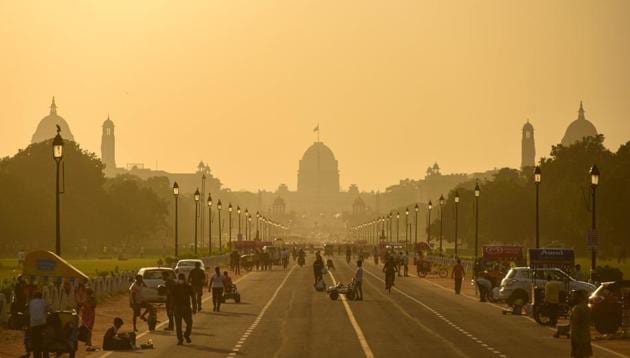Air quality on the decline in Delhi, expect worse in coming week
Scientists at the India Meteorological Department (IMD) said Delhi at present is getting north-westerly winds from the neighbouring states of Punjab and Haryana, where crop stubble burning has already begun.
Delhi’s air quality has been witnessing a steady dip over the last three days. On Saturday, the city’s air quality index settled at 172, according to Central Pollution Control Board (CPCB) data.

The overall AQI at 4pm was 172, considered to be in the ‘moderate’ category. On Friday, the average air quality was 134, also in the ‘moderate’ zone.
CPCB’s hourly average air quality data, however, shows that from Saturday early morning, pollution levels started rising in the city.
Data shows that the hourly average levels have been gradually deteriorating from 152 at 6am to 155 at 7am and then by 12 pm it went down to 169. From 2pm, the levels have remained over 170.
Scientists at the India Meteorological Department (IMD) said the city at present is getting north-westerly winds from the neighbouring states of Punjab and Haryana, where crop stubble burning has already begun.
However, since the wind speed has remained between 15-20kmph, the dispersion of pollution particles is happening at a faster rate.
“The wind speed has been on the higher side, which is keeping the pollution levels in the ‘moderate’ zone. But in the coming weeks, the wind speed will slow down and with crop residue burning increasing in Punjab and Haryana things are expected to get worse,” said a senior IMD scientist.
He said that on Friday and Saturday, around 60 to 70 ‘red dots’, which are symbolic of farm fires, were observed around Punjab and Haryana in satellite imagery. He said most burning instances were seen from the districts of Amritsar and Tarn Taran.
Every year at the onset of winters, Delhi’s air quality is severely affected by large-scale stubble burning activities in the neighbouring states of Punjab and Haryana.
Government data shows that in 2019, 44% of the city’s pollution was contributed by stubble burning.
Looking for solutions for this annual occurrence, Delhi, Delhi chief minister Arvind Kejriwal on Saturday wrote a letter to union environment minister Prakash Javdekar, proposing the use of Indian Agricultural Research Institute’s (IARI) innovation, which decomposes the stubble in the field itself and converts it to manure, which can be used by farmers to prepare their fields for the next crop.
“Our scientists seem to be have developed an effective solution. I know we are late for this season. But let’s put all efforts to prevent as many fires as we can in the available time,” Kejriwal tweeted.
Data collated by National Aeronautics and Space Administration (NASA) shows that on Friday, over 250 cases of crop residue burning were spotted in Punjab. Out of this, nearly 170 cases were from Amritsar.
Pawan Gupta, research scientist at the Goddard Earth Sciences Technology and Research (GESTAR), Universities Space Research Association, said that apart from the smoke from these fires, Delhi is also likely to experience a spell of dust coming in from the west.
“Dust transport from the west is also expected to affect the air quality in northern-central India over the next two to three days,” Gupta said.
Stay updated with all top Cities including, Bengaluru, Delhi, Mumbai and more across India. Stay informed on the latest happenings in World News along with Delhi Election 2025 and Delhi Election Result 2025 Live, New Delhi Election Result Live, Kalkaji Election Result Live at Hindustan Times.
Stay updated with all top Cities including, Bengaluru, Delhi, Mumbai and more across India. Stay informed on the latest happenings in World News along with Delhi Election 2025 and Delhi Election Result 2025 Live, New Delhi Election Result Live, Kalkaji Election Result Live at Hindustan Times.






